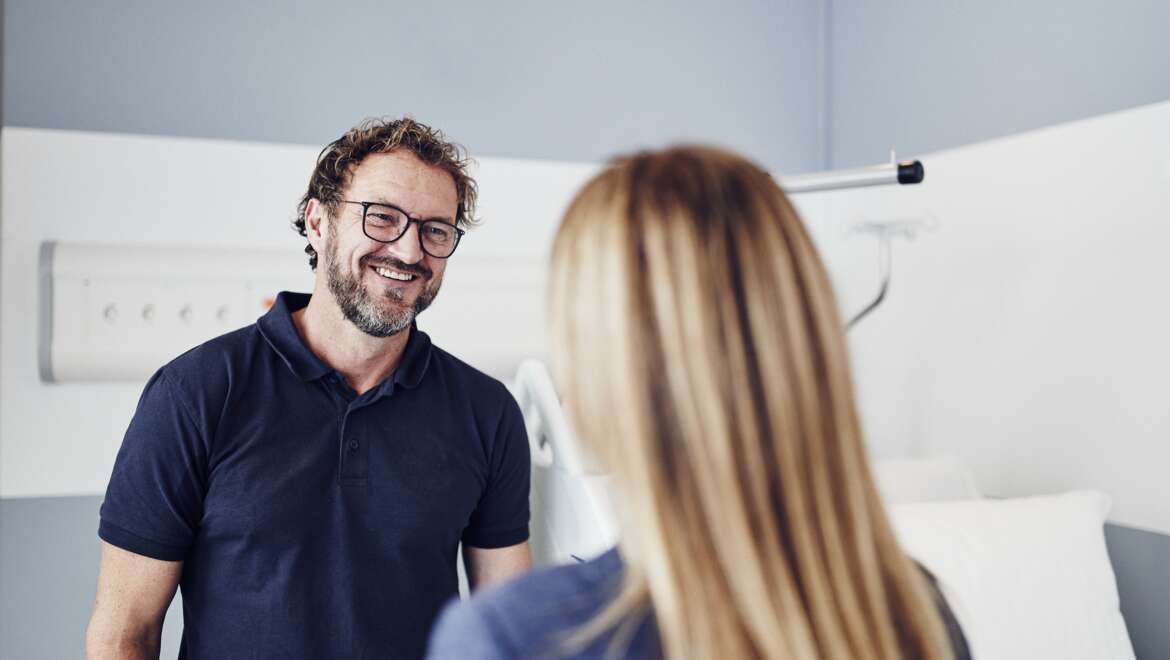Prone Positioning in Severe Acute Respiratory Distress Syndrome
Claude Guérin, M.D., Ph.D., Jean Reignier, M.D., Ph.D., Jean-Christophe Richard, M.D., et al.
New England Journal of Medicine, 2013
In this landmark randomized, controlled trial, the Proseva study shows that in patients with severe ARDS, early application of prolonged prone-positioning sessions significantly decreased 28-day and 90-day mortality.
https://www.nejm.org/doi/full/10.1056/NEJMoa1214103
The Cost-effectiveness of interventions to increase utilization of prone positioning for severe acute respiratory distress syndrome
Baston, Cameron; Coe, Norma B.; Guerin, Claude; Mancebo, Jordi; Halpern, Scott
Critical Care Medicine: March 2019 – Volume 47 – Issue 3- p e198-e205
This study quantifies the cost-effectiveness across a broad range of assumptions from a societal and hospital perspective of a hypothetical intervention to increase prone positioning utilization for patients likely to benefit.
Medicine Clinical Practice Guidelines: Mechanical Ventilation in Adult Patients with Acute Respiratory Distress Syndrome
Eddy Fan, Lorenzo Del Sorbo, Ewan C Goligher, Carol L. Hodgson, et al. On behalf of the American Thoracic Socienty, European Society of Intensive Care Medicine, and Society of Critical Care Medicine.
American Journal of Critical Care Medicine, 2017
Evidence based guidelines help build successful programs and improve outcomes. This article supported by 3 reputable groups of physicians provides grading of recommendations, assessment, development and evaluation, methodology for clinical recommendations.
https://www.atsjournals.org/doi/10.1164/rccm.201703-0548ST
The Standard of Care of Patients with ARDS: ventilator settings and rescue therapies for refractory hypoxemia
Thomas Bein, Salvatore Grasso, Onnen Moerer, Michael Quintel, Claude Guerin, et al
Intensive Care Medicine, 2016
Utilize this resource for building a prone program, updating protocols, or comparing current practice to EBP. This article provides recommendations for all supportive therapy, including the indications, contraindications, timing and duration for prone therapy.
https://link.springer.com/article/10.1007/s00134-016-4325-4
Gas Exchange in the Prone Posture
Nicholas J. Johnson, Andrew M. Luks, Robb W. Glenny
Respiratory Care, 2017
The prone posture is known to have numerous effects on gas exchange, both under normal conditions and in patients with ARDS. In this article, they begin by reviewing the principles of gas exchange, including normal physiology and pathologic alterations independent of posture, and then discuss the physiologic basis for improved gas exchange in the prone posture.
http://rc.rcjournal.com/content/62/8/1097
Epidemiology, patterns of care, and mortality for patients with acute respiratory distress syndrome in intensive care units in 50 countries.
Giacomo Bellani, John G. Laffey, Tai Pham, Eddy Fan, Laurent Brochard, et al
JAMA, 2017
Limited information exists about the epidemiology, recognition, management, and outcomes of patients with acute respiratory distress syndrome. The objective of this article was to evaluate ICU incidence and outcomes of ARDS and to assess clinical recognition, ventilation management, and use of adjuncts – for example prone positioning – in routine clinical practice for patients fulfilling the ARDS Berlin Definition.
http://jamanetwork.com/pdfaccess.ashx?url=/data/journals/jama/935012/
Declining mortality in patients with acute respiratory distress syndrome: An analysis of the Acute Respiratory Distress Syndrome network trials
Zhang, Zhongheng; Spieth, Peter Markus; Chiumello, Davide; Goyal Hemant; et al.
Critical Care Medicine: March 2019 – Volume 47 – Issue 3 – p 315-323
This study aimed to investigate the trends in mortality in acute respiratory distress syndrome patients over time and to explore the roles of daily fluid balance and ventilation variables in those patients. This is a secondary analysis of randomized controlled trials conducted by the Acute Respiratory Distress Syndrome Network from 1996 to 2013.
Prone position acute respiratory distress syndrome patients: less prone to ventilator associated pneumonia?
Dupont H., et al.
Intensive Care Medicine, 2016
Ventilator-associated pneumonia can lead to an increase in hospital costs and even death for patients. This article provides a quick review of how prone therapy can reduce Ventilator-associated Pneumonia (VAP).
https://link.springer.com/content/pdf/10.1007%2Fs00134-015-4190-6.pdf
The efficacy and safety of prone positioning in adult patients with acute respiratory distress syndrome: a meta-analysis of randomized controlled trials.
So Young Park, Hyun Jung Kim, Kwan Ha Yoo, Yong Bum Park, Seo Woo Kim, Seok Jeong Lee, et al
Journal of Thoracic Disease, 2015
This article is a meta-analysis of prone therapy. They evaluated effects of prone position duration and protective lung strategies on mortality rates in ARDS.
http://jtd.amegroups.com/article/view/3737/4524
A comparative study of supine lying, side lying and prone positioning on oxygen saturation, in mechanically ventilated patients, in acute respiratory failure.
Prajakta S. Patil, Raziya Nagarwala
International journal of Research in Medical Sciences, 2015
Turning a patient supine to lateral to prone to lateral, at least hourly makes a difference between living and dying for intisive care patients. This study will review the differences in supine, side lying and prone positions.
Comparative study of supine lying, side lying and prone positioning article
Prone positioning reduces mortality from acute respiratory distress syndrome in the low tidal volume era: a meta-analysis
Jeremy R. Beitler, Shahzad Shaefi, Sydney B. Montesi, Amy Devlin, Stephen H. Loring, et al.
Intensive Care Medicine, 2014
This meta-analysis was performed to integrate PROSEVA findings with existing literature and test whether differences in tidal volume explain conflicting results among randomized trials.
https://link.springer.com/article/10.1007%2Fs00134-013-3194-3
Turning points: Implementing kinetic therapy in the ICU
Powers, Jan; Daniels, Dawn
Nurse Management, 2004- Volume 35 – Issue 3 – P1-7
Maintaining a supine position is deadly, particularly for ICU patients with pulmonary complicaitons. This article provides an explanation of kinetic therapy, and how a facility adapted it in the ICU.
http://journals.lww.com/nursingmanagement/fulltext/2004h
Acute Respiratory Distress Syndrome, The Berlin Definition
The ARDS definition task force: V.Marco Ranieri, MD; Gordon D. Rubenfeld, MD; B. Taylor Thompson, MD; Niall D. Ferguson MD, et al
JAMA, 2012
This artlice reviews the Berlin Definition of ARDS set by the European Society of Intensive Care medicine and endorsed by the America Thoracic Society and Society of Critical Care Medicine.
https://jamanetwork.com/journals/jama/article-abstract/1160659
The prone position eliminates compression of the lungs by the heart
Richard k Albert and Rolf D. Hubmayr
American Journal Respiratory Critical Care Medicine, 2000
https://www.atsjournals.org/
https://www.atsjournals.org/doi/full/10.1164/ajrccm.161.5.9901037

